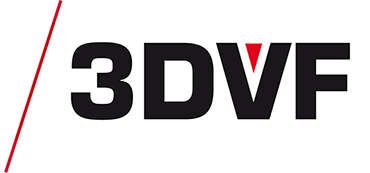Morteza Ramezanali présente sa nouvelle démoreel de technical artist, avec quelques plugins Maya qu’il a développés (Flux, Flex et Tornado).
Le breakdown avec détails techniques :
Segment 01
—————————————————————————–
FLUX: An approximate image based lighting tool for Maya – Plug in Development
—————————————————————————–
Technology: C++, Maya API, MEL, Boost, OpenGL, OpenMP, OpenExr
—————————————————————————–
Description:
Main Features:
• Less Noise in Render
• Less Render-time
• Editable and Key able
• Precise Control over the result
• Ideal for lighting Fur, Hair, Fluids and matching lights with Live action
• Combines and interpolates multiple sets of HDRI
• Pipeline friendly; Exports centroids data to Maya’s native data structure
• Artists friendly; Customized “Attribute Editor Templates” for easy node connection and traversal
• Fast and responsive; Multi-threaded and accelerated using built-in kdTree
• Interactive modification of lights properties
• Output statistics, verbose, diagnostic data
Flux Pipeline:
Stage (1) – Importing data
• [ fluxLoader ]: Supports all type of openExr files (Tiled, Scanline, Multichannel) with channel shuffling and extra bit info; Built-in support for Latitude-Longitude and Cube environment maps.
Stage (2) – Pre-processing
• [ fluxLuminance ]: Computes luminance energy of input data with compensation at poles
• [ fluxSat ]: Accelerate computation using SAT (Summed Area Tables)
Stage (3) – Centroids Generation
• [ fluxMedianCut ]: Adaptive and fixed importance sampling using MedianCut algorithms with an optional pre-processing Barlet filtering
•[ fluxHammerslayHalton ]: Importance sampling with Hammerslay / Halton sequences and computing energy based on Voronoi patterns
• [ fluxUserInput ]: Generates centroids based on user’s input, UVs, Radius, Falloff; Computing luminance/color by using Mean, Normal or Sum operator.
Stage (4) – Visualizing
• [ fluxCentroidsViz ]: Visualizes centroids data in viewport including Color, Luminance scale, Magnitude, IDs, Centroids orientation
Stage (5) – Centroids Editing
• [ fluxCentroidsTransform ]: Centroids transformation including translation, rotation, radius and orientation; Meta information including Location, description and centroids count
• [ fluxCentroidsField ]: Generates centroids field by combining multiple sets using weight balance or union interpolation
• [ fluxCentroidsEdit ]: Clustering and selecting centroids by Luminance, Color, UV ranges, Volume and IDs; Cleanup and deleting centroids; Editing centroids color and luminance using stackable operators with priority feature; including Generic, Set-Range, Normalize, Clamp, Override (Axial) and remapping in RGB or HSV color space
Stage (6) – Exporting data
• [ fluxCentroidsExport ]: Exports centroids data to Maya’s native data structure including Matrices, Colors, Energies, UVs; Ideal for transferring data to shaders, lights, etc.
• [ fluxGlobal ]: Global container for flux’s IBL settings, lights rigs and flux’s Mentalray shader
• [ fluxMentalrayIBL ]: Utilizing centroids data inside Mentalray
• [ fluxLightsGeneration ]: Generates light rigs based on centroids data and global container nodes
Segment 02
—————————————————————————–
FLEX: General purpose feather system for Maya – Plugin Development
—————————————————————————–
Technology: C++, Maya API, MEL
—————————————————————————–
Description:
Main Features:
• Non-Destructive workflow
• Interactive modification
• Applying animation using key frames and dynamics
• Styling using control curves
• Pipeline friendly; Saves and Exports feather data to attribute maps and Maya’s geometry cache
Flex Pipeline:
Stage (1) – Sample distributing
• [ Particle Repulsion ]: Distributing samples using particle repulsion algorithm
• [ Uniform ]: Distributing samples using uniform methods including grid and padded grid
• [ Paint Samples ]: Painting samples using Artisan for greater control over samples distribution
• [ Randomizing Samples ]: Adding chaos to samples using various methods including noise and randomization
• [ Cut and Density Maps ]: Applying Cut map to remove samples; Applying density map to alter density of samples
Stage (2) – Flex geos scattering
• [ Spine ID Editor ]: Defining Edge Spine ID for flex geometries
• [ Flex Scattering ]: Scattering flex geometries over samples using various options including Instancing, initial orientation, etc.
Stage (3) – Tweaking and Editing Flex geos
• [ Flex Replacing ]: Non-destructive flex geometry replacement using various options including map, range and deep mode
• [ Flex Attributes Mapping ]: Setting flex geometries attributes by mapping to files and textures
• [ Randomizing Flex Attributes ]: Adding randomization to flex geometries attributes
• [ Flex Initial State Editor ]: Setting flex geometries initial states after tweaking and editing
Stage (4) – Flex Partitioning
• [ Flex System ]: Defining various flex system for greater control over flex geometries (Wing, Body, Chest, …)
• [ Flex Active Mode Editor ]: Setting active flex mode including Guided (Control Curves), Passive (Interpolated), Static
Stage (5) – Styling
• [ Guided Flex Styling ]: Styling passive flex geometries using active guided flex geometries
Stage (6) – Dynamics / Animation
• [ Set Collision ]: Attaching geometries to flex systems as collision objects
• [ Connect to Field ]: Connecting Maya’s fields to flex systems
Stage (7) – Exporting Cache
• [ Flex Attributes Exporter ]: Exporting flex geometries attributes using texture maps
• [ Flex Cache Exporter ]: Exporting flex geometries animation to Maya’s native geometry cache format
Segment 03
—————————————————————————–
Tornado: Case study – Plug in Development
—————————————————————————–
Technology: C++, Maya API, MEL
—————————————————————————–
Description:
• [ dnaTransferFluidAttributes ]: Transfers particle’s scalar and vector including customPP attributes to fluid containers within Add, Replace and Multiple modes. Interpolates data using linstep, smoothstep and hermite functions.
• [ dnaTransformInterp ]: Interpolates transformation matrix between arrays of matrices
• [ dnaRampInfo ]: Maps array of attributes using curves
In this example dnaTransferFluidAttributes was used to transfer particles’ attributes from tornado rig to fluid container; dnaTransformInterp was used to interpolate surface between main controllers (Stretchy Setup) and dnaRampInfo was used to add extra details to the surface of tornado.
===========================================
Please visit my website for breakdown and detail: cgdna.com
Via ItsArtmag.
